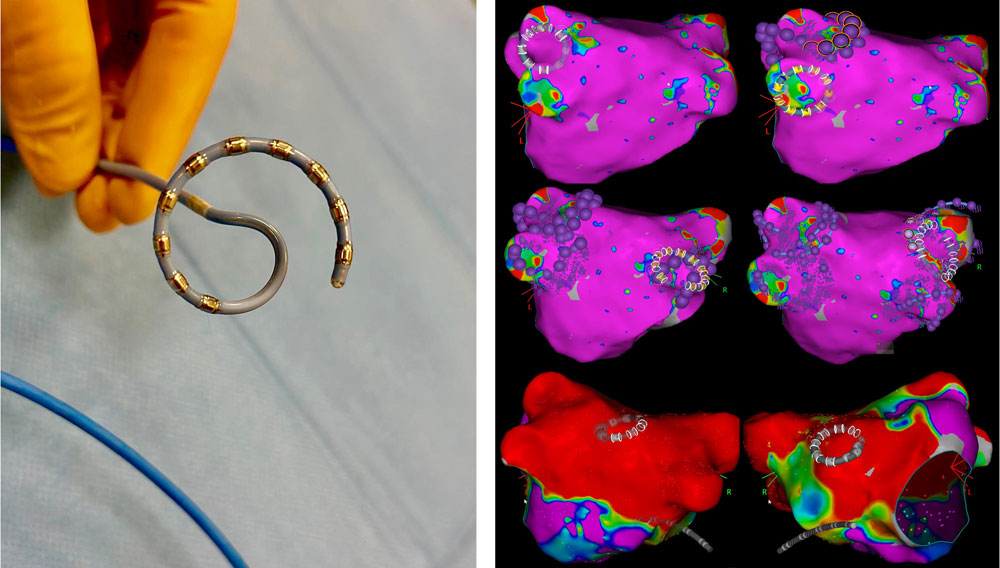Pulse Field Ablation (PFA) in Atrial Fibrillation
Important Innovation in Atrial Fibrillation Ablation Using a New Energy Source Called Electroporation or Pulse Field Ablation (PFA)
Atrial fibrillation is the most common cardiac arrhythmia in clinical practice and can significantly impact a patient’s quality of life. Characterized by chaotic and irregular electrical activity in the atria, this condition can cause debilitating symptoms such as palpitations, fatigue, and a reduced ability to perform daily activities. Additionally, it is associated with an increased risk of serious complications, including stroke and heart failure. For these reasons, effective and safe treatment is essential to improve the management of this arrhythmia and reduce related risks.
In our Center, we have adopted one of the most advanced techniques for treating atrial fibrillation: Pulsed Field Ablation (PFA). This innovative method represents a significant shift from traditional ablative techniques, offering a combination of high precision and safety.
PFA is based on a completely different approach from thermal methods such as radiofrequency (heat) and cryoenergy (cold). This modern technology uses very short, high-intensity electrical pulses to generate a phenomenon known as electroporation. In practical terms, this technology creates microscopic pores in the membranes of the heart cells responsible for the arrhythmia, leading to their selective death. The most significant aspect of this technique is its ability to preserve surrounding tissues, such as the oesophagus, phrenic nerves, and pulmonary veins, effectively eliminating the risk of severe complications often associated with traditional ablative methods.
To ensure the best results, our Canter uses two different types of catheters, each with specific characteristics that allow us to customize the approach based on the patient’s needs. The variable loop catheter (Varipulse™, Biosense Webster, Irvine, CA, USA; Figure 1) is particularly suitable for precisely adapting to the anatomy of the pulmonary veins, making it ideal for more complex cases.

The modulable configuration catheter (Farapulse™, Marlborough, MA, USA; Figure 2), on the other hand, allows for uniform treatment of larger areas, ensuring effective isolation of target structures. This technological flexibility enables us to address a wide range of clinical situations, customizing each procedure based on the patient’s anatomical and clinical characteristics.

Our Center is among the first to have adopted this technology using the variable loop catheter (Varipulse™), which is demonstrating promising results comparable to those obtained with the modulable configuration catheter (Farapulse™). Both solutions expand our therapeutic possibilities, demonstrating that both approaches offer equal efficacy in meeting the diverse needs of patients with different forms of atrial fibrillation.
Another advantage of PFA is the speed and precision of the procedure. The ability to create effective lesions without requiring rigid contact between the catheter and the treated tissue not only accelerates procedure times but also improves the patient’s experience.
Clinical studies have shown that PFA offers comparable, if not superior, efficacy to traditional techniques, with high success rates in the complete isolation of the pulmonary veins, a crucial phase for the treatment of atrial fibrillation. Additionally, thanks to the reduced risk of complications, this method stands out as a highly safe option for patients.
The adoption of this advanced technology, along with the expertise of our team, allows us to offer innovative, safe, and effective treatment, keeping pace with the latest developments in modern cardiology.
